Image

Key to Symbols
ChemHAT health impact icons have different colors depending on the strength of the evidence. For example, when authoritative government bodies have definitively determined that a chemical can cause cancer in people, the icon will be red to show that it is the strongest evidence base.
 Likely to cause
Likely to cause
 Can cause
Can cause
 May cause
May cause

PBT (Persistent Bioaccumulative Toxicant) – Harm in small quantities while not breaking down readily from natural processes, accumulating in organisms, and concentrating as it moves up the food chain.

Cancer – Increased cancer risk.

Breast Cancer – Increased risk of mammary gland tumors in animal experiments.

Birth Defects – Harm to the developing child including birth defects, low birth weight and biological or behavioral problems that appear as the child grows.

Reproductive Harm – Disruption of the male or female reproductive systems, changing sexual development, behavior or functions, decreasing fertility, or resulting in loss of the fetus during pregnancy.

Endocrine Disruption – Interference with the endocrine system, which plays a crucial role in metabolism, development, growth, reproduction and behavior.

Gene Damage – Increases in the rate of mutations, which are changes in genetic material in cells.

Allergen/Asthmagen – Immune system responses that result in respiratory health effects that occur with increased sensitivity to lower and lower exposures over time.

Brain/Nervous System Harm – Damage to the nervous system including the brain.

Toxic to Humans & Animals – Toxicity or fatality on contact, ingestion or inhalation to humans and other mammals.

Other Health Effects – Can cause serious damage on contact or ingestion.

Eye Irritation – Irritation or serious damage to the eyes.

Skin Irritation – Irritation or serious damage to the skin.

Skin Sensitization – Allergic skin reactions.

Flammable – Easily ignited and capable of burning rapidly.

Reactive – May spontaneously ignite or explode on its own or in contact with water.

Restricted List – This chemical is on a list from an authoritative body recommending that its use be avoided.

Acute Harm to Aquatic Ecosystems – Biological harm or possible death to fish or other aquatic organisms following a single exposure.

Chronic Harm to Aquatic Ecosystems – Irreversible harm to fish or other aquatic organisms following long term exposure.

Harm to Land Ecosystems – Harm to land based plants, animals or microorganisms.

Climate Change – Climate change by contributing to the greenhouse effect or trapping heat in the atmosphere.

Ozone Depletion – Chemical reactions that destroy ozone in the earth’s upper atmosphere allowing cancer-causing ultraviolet radiation from the sun to hit our skin.

Persistent – Does not break down readily from natural processes.

Bio-accumulation – Accumulation in organisms, concentrating as it moves up the food chain.